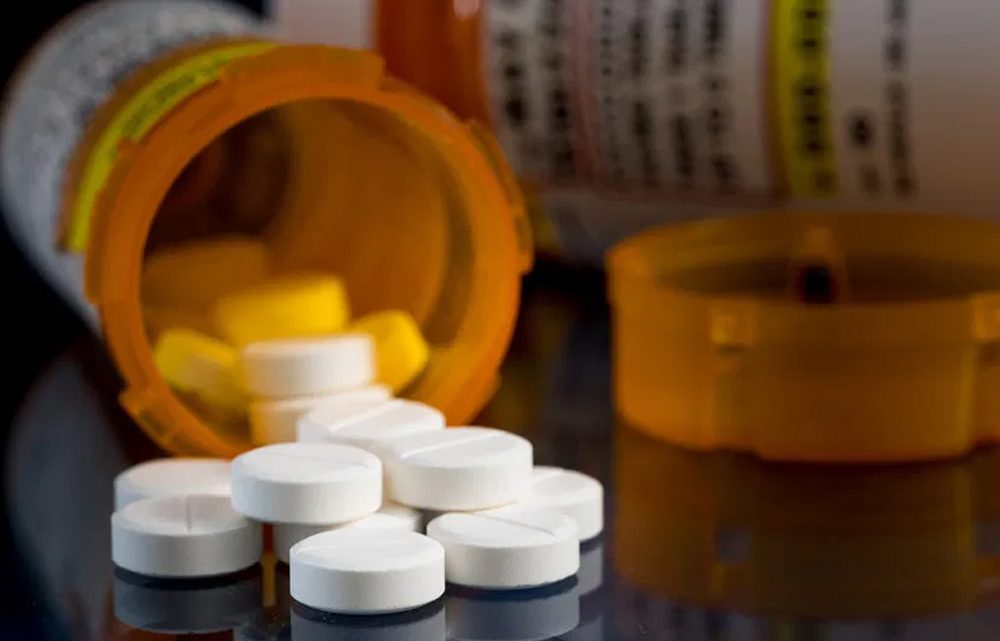
Is It Legal To Have Oxycodone With or Without A Prescription?
Oxycodone is one of the most potent and regularly misused prescription painkillers in the United States. It is used for the management of both chronic and acute pain. It is illegal to distribute, use, and possess Oxycodone without a prescription from a medical practitioner in most states. Non-medical use of unprescribed opioid medications has become a growing concern because it is easy for one to shift from abusing Oxycodone to developing an addiction to the drug. Non-medical use of Oxycodone includes oral consumption without the instruction of a medical practitioner, injecting dissolved tablets, or snorting the crushed pills. Oxycodone is, therefore, only available to users through a legal prescription from a legitimate physician. The drug is mainly prescribed to alleviate pain, but Oxycodone over-prescription has been a significant contributor to the ongoing opioid plague over the years.
Oxycodone Status in the Controlled Substances Act
 Due to the risks associated with Oxycodone use, the United States Drug Enforcement Administration has classified the drug in the Controlled Substances Act as a Schedule II narcotic. This federal law determines and classifies any substances with a high capacity for physical and psychological dependence and misuse among users from Schedule I to V.
Due to the risks associated with Oxycodone use, the United States Drug Enforcement Administration has classified the drug in the Controlled Substances Act as a Schedule II narcotic. This federal law determines and classifies any substances with a high capacity for physical and psychological dependence and misuse among users from Schedule I to V.
Schedule 1 substances like LSD and Heroin are categorized as the most harmful, while Schedule V substances like cough medications with codeine are the least dangerous. Oxycodone is presently approved for medical use as a Schedule II drug, but it has a high addiction risk and abuse potential. Due to this categorization, Oxycodone is extensively regulated by federal law, and there are strict criminal punishments for the unlawful possession or distribution of the substance. Different states have varying criminal penalties for the possession of unprescribed Oxycodone. These measures also depend on how much Oxycodone one has in their possession. However, the punishment for the sale and possession of Oxycodone will vary from life imprisonment, incarceration, and compulsory drug treatment plans.
Obtaining Oxycodone Illegally
 Oxycodone is legally accessible in different brands and forms through prescriptions from legitimate medical practitioners. However, since it is considered a controlled substance, distributing, using, and possessing the drug without a prescription is a severe offense. Individuals can quickly get prescriptions for Oxycodone in clinics if they present the relevant ailments. However, physicians do not have the proper training to determine the drug-seeking actions of people suffering from Oxycodone abuse. Usually, people with an Oxycodone abuse problem will go to various medical doctors to get prescriptions. They will also visit pharmacies in newer areas to get their prescriptions filled to avoid being noticed. Sometimes, abusers will also engage in criminal activities like theft, fraud, and forgery while altering prescriptions to maintain their harmful habits. Generally, people can purchase Oxycodone from the black market, especially if they don’t have a prescription for the drug or suffer from an opioid use disorder.
Oxycodone is legally accessible in different brands and forms through prescriptions from legitimate medical practitioners. However, since it is considered a controlled substance, distributing, using, and possessing the drug without a prescription is a severe offense. Individuals can quickly get prescriptions for Oxycodone in clinics if they present the relevant ailments. However, physicians do not have the proper training to determine the drug-seeking actions of people suffering from Oxycodone abuse. Usually, people with an Oxycodone abuse problem will go to various medical doctors to get prescriptions. They will also visit pharmacies in newer areas to get their prescriptions filled to avoid being noticed. Sometimes, abusers will also engage in criminal activities like theft, fraud, and forgery while altering prescriptions to maintain their harmful habits. Generally, people can purchase Oxycodone from the black market, especially if they don’t have a prescription for the drug or suffer from an opioid use disorder.
Permitted Amounts of Oxycodone In One’s Possession
Due to Oxycodone’s status as a Schedule II substance, it is only legal to have it through a legitimate prescription in amounts less than or equal to or less than that prescribed. Once a physician prescribes Oxycodone to a patient, they receive a container with a detailed medication label. This label indicates the prescription date, the amount in the container, expiration, dose instructions, prescription name, pharmacy information, the prescribing doctor’s name, and the patient’s identification. The patient is at risk of legal consequences and bound to federal and state laws as long as their prescription is kept in the container, has not expired, and the amount indicated on the label is less than or the same as what is inside.
In many states like Maine, it is illegal to have Oxycodone in your possession unless it is in the original container that the pharmacist dispensed or sold to you. The only time it is permissible to have an Oxycodone prescription outside the original packaging is when it has been removed for use. These laws provide that scheduled prescription drugs must only be stored in their original container and not in any other storage container. It is a criminal offense to have Oxycodone outside its original container regardless of a physician rightfully prescribing it to you. Additionally, it is also illegal to have Oxycodone in your possession that was not prescribed to you in any amount.
Using Oxycodone without a medical reason or a prescription is also illegal. If detected in your body during random drug testing programs, this can result in severe criminal penalties.
Criminal Penalties for Oxycodone-Related Offenses
 Any offense related to Oxycodone within a particular state can be penalized based on the amount in possession. A small amount of Oxycodone may earn you a misdemeanor possession charge, while possession of a more considerable amount will get you a severe felony charge. Other factors that may determine the penalty given include the intent of Oxycodone possession and how the individual acquired the drug. Oxycodone-related misdemeanor offenses can get one a short incarceration period, fines, and even probation. A felony charge will depend on how severe the violation is, but it can get you a maximum of 20 years imprisonment. Certain offenses like Oxycodone trafficking can also get you a federal penalty. Usually, drug crimes are either differentiated between possession and sale crimes. Under state and federal laws, the possession of Oxycodone is generally considered to be on the same level as actually selling the drug.
Any offense related to Oxycodone within a particular state can be penalized based on the amount in possession. A small amount of Oxycodone may earn you a misdemeanor possession charge, while possession of a more considerable amount will get you a severe felony charge. Other factors that may determine the penalty given include the intent of Oxycodone possession and how the individual acquired the drug. Oxycodone-related misdemeanor offenses can get one a short incarceration period, fines, and even probation. A felony charge will depend on how severe the violation is, but it can get you a maximum of 20 years imprisonment. Certain offenses like Oxycodone trafficking can also get you a federal penalty. Usually, drug crimes are either differentiated between possession and sale crimes. Under state and federal laws, the possession of Oxycodone is generally considered to be on the same level as actually selling the drug.
Simple possession of Oxycodone involves having a small amount of the drug, indicating personal use of the substance. The possession of Oxycodone with the intention of distribution is a situation whereby one is caught in possession of the drug. The circumstances will also imply that they are selling the drug and not using it personally. However, if the prosecution does not have concrete evidence that the individual was about to sell Oxycodone, the prosecutor will show the defendant’s intention to sell through substantial evidence. Such evidence could comprise the possession of drug packaging materials, cash, and large amounts of Oxycodone. According to federal law, the term ‘distribution’ is used instead of ‘sale’. It defines the attempted transfer or sale of the drug with or without the exchange of funds. In an Oxycodone-related case, charges can be filed against pharmacists, physicians, or other parties complicit in an illegal drug-supply operation.